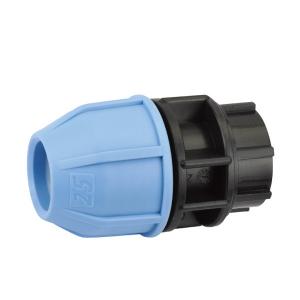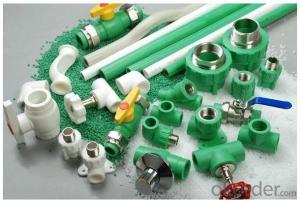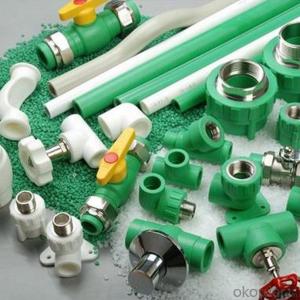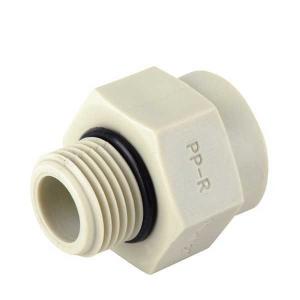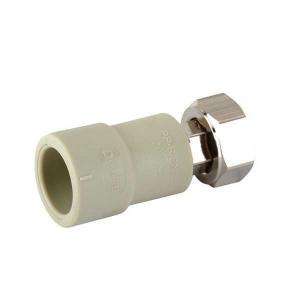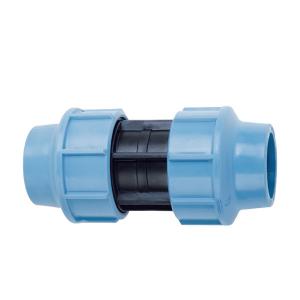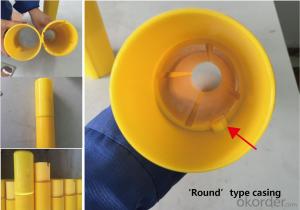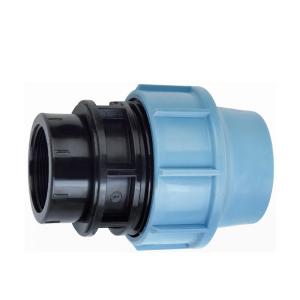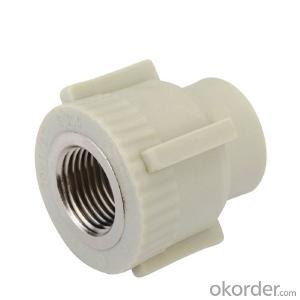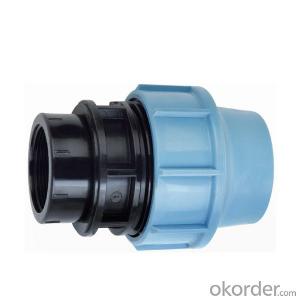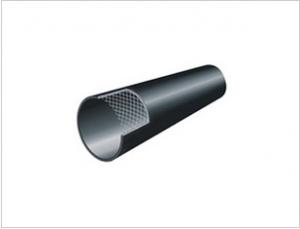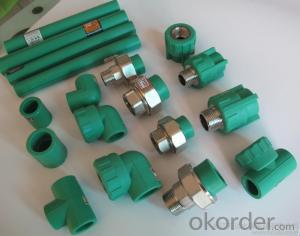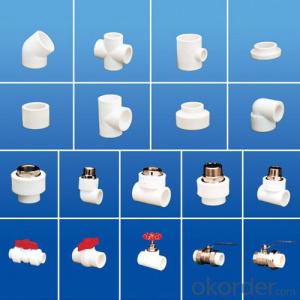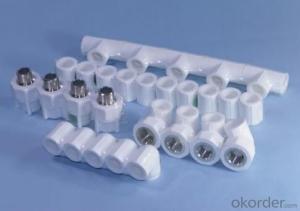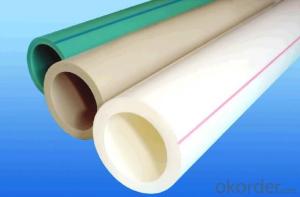High Quality Female Adaptor for Ips Plastic Pipe Fittings
- Loading Port:
- Ningbo
- Payment Terms:
- TT or LC
- Min Order Qty:
- 1000 watt
- Supply Capability:
- 100000 watt/month
OKorder Service Pledge
Quality Product, Order Online Tracking, Timely Delivery
OKorder Financial Service
Credit Rating, Credit Services, Credit Purchasing
You Might Also Like
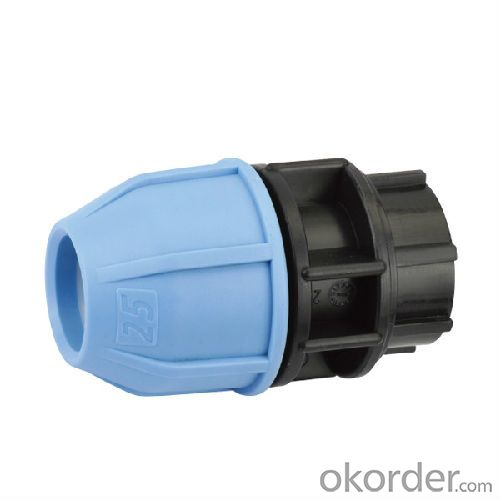 1.It is used in industrial fields, agriculture and garden irrigation 2. Beauty appearance.3.Thermal insulation and energy saving.4. Easy installation 5.excellent heat resistance and pressure resistance 6. affordable price
1.It is used in industrial fields, agriculture and garden irrigation 2. Beauty appearance.3.Thermal insulation and energy saving.4. Easy installation 5.excellent heat resistance and pressure resistance 6. affordable price
1.Material:Random Polypropylene(Hyosung R200P);
2.ISO9001&ISO14001;
3.Standard:GB/T 18742.3-2002, DIN8077/8078;
4.OEM also ok
- Q: Can plastic pipe fittings be used for stormwater drainage?
- Yes, plastic pipe fittings can be used for stormwater drainage. Plastic fittings are commonly used in stormwater drainage systems due to their durability, corrosion resistance, and ease of installation. They are also cost-effective and offer a wide range of options to accommodate different pipe sizes and configurations.
- Q: Are plastic pipe fittings resistant to seawater and saltwater?
- Yes, plastic pipe fittings are generally resistant to both seawater and saltwater.
- Q: Are plastic pipe fittings suitable for pharmaceutical manufacturing processes?
- No, plastic pipe fittings are generally not suitable for pharmaceutical manufacturing processes due to the risk of leaching chemicals, potential contamination, and the need for stringent sanitary conditions.
- Q: Are plastic pipe fittings compatible with different pipe diameters?
- Yes, plastic pipe fittings are compatible with different pipe diameters. They are designed to be versatile and can be used with various pipe sizes, allowing for easy and flexible installation.
- Q: Are plastic pipe fittings more cost-effective than metal ones?
- It depends on the specific application and requirements. Plastic pipe fittings are generally more cost-effective than metal ones in terms of upfront costs, as they are typically cheaper to purchase. However, metal fittings may offer advantages in terms of durability and longevity, reducing the need for frequent replacements. Additionally, metal fittings may have higher pressure and temperature ratings, making them more suitable for certain high-demand applications. Therefore, it is important to consider factors such as intended use, lifespan, and maintenance costs when determining the overall cost-effectiveness of plastic versus metal pipe fittings.
- Q: Can plastic pipe fittings be used for plumbing applications?
- Yes, plastic pipe fittings can be used for plumbing applications. They are commonly used in residential and commercial plumbing systems as they are durable, lightweight, and resistant to corrosion. Plastic fittings are also easy to install and require less maintenance compared to traditional metal fittings. However, it is important to ensure that the fittings are made of high-quality materials and meet the required standards for plumbing applications.
- Q: Are plastic pipe fittings resistant to hydrocarbons and oils?
- Yes, plastic pipe fittings are generally resistant to hydrocarbons and oils.
- Q: Are plastic pipe fittings suitable for all types of pipes?
- No, plastic pipe fittings are not suitable for all types of pipes. Different types of pipes, such as copper, PVC, or steel, may require specific fittings designed for their material and connection method. It is important to ensure compatibility and use the appropriate fittings for each pipe type to ensure a secure and leak-free connection.
- Q: How do plastic pipe fittings compare to galvanized steel fittings?
- Plastic pipe fittings offer several advantages over galvanized steel fittings. Plastic fittings are generally more affordable, lightweight, and easier to install due to their simple and flexible design. They are also resistant to corrosion, which makes them suitable for use in various environments, including exposure to water. On the other hand, galvanized steel fittings are durable and can withstand higher temperatures and pressures, making them suitable for heavy-duty applications. However, they can be more expensive, heavier, and require specialized tools for installation. Ultimately, the choice between plastic and galvanized steel fittings depends on the specific needs and requirements of the project.
- Q: Are plastic pipe fittings compatible with push-to-connect fittings?
- Yes, plastic pipe fittings are compatible with push-to-connect fittings. Push-to-connect fittings are designed to work with various types of pipes, including plastic pipes such as PVC, CPVC, and PEX. These fittings provide a quick and easy way to connect pipes without the need for any special tools or adhesives.
Send your message to us
High Quality Female Adaptor for Ips Plastic Pipe Fittings
- Loading Port:
- Ningbo
- Payment Terms:
- TT or LC
- Min Order Qty:
- 1000 watt
- Supply Capability:
- 100000 watt/month
OKorder Service Pledge
Quality Product, Order Online Tracking, Timely Delivery
OKorder Financial Service
Credit Rating, Credit Services, Credit Purchasing
Similar products
Hot products
Hot Searches
Related keywords
